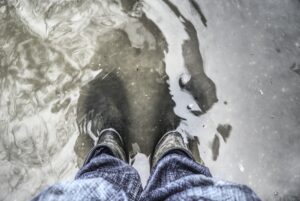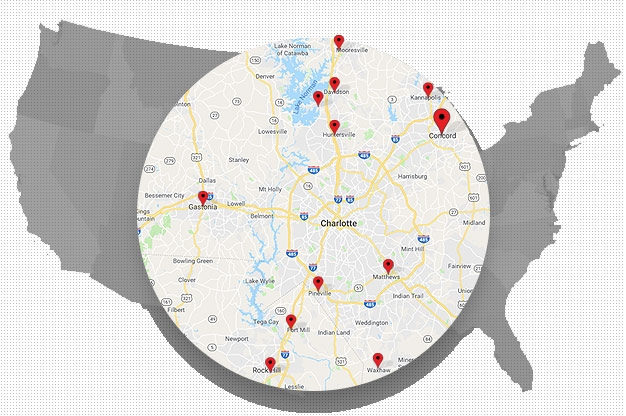7 Common Basement Waterproofing Mistakes and How to Avoid Them

A whopping 98% of homes will experience some sort of water damage during a homeowner’s lifetime. That makes it almost a surefire thing that your basement will undergo this issue at some point or another!
To make sure you don’t have to deal with crazy flooding issues and costly repairs, you can invest in a basement waterproofing service. Just make sure to avoid a few common pitfalls.
Let’s check out seven basement waterproofing mistakes that all too many homeowners seem to make.
1. Relying on Only Paint for Waterproofing
Now, before we start knocking waterproofing paint, it’s important to note that this type of paint is important for waterproofing your basement. However, it can’t be the only solution you use to do so.
Many homeowners make the mistake of placing all their waterproofing eggs in the waterproofing paint can. And while waterproofing paint can help, it isn’t the only step you need to take.
If you use waterproofing paint as a quick fix without addressing the underlying issue, you can cause bubbling and cracking. That leads to flaking off paint and exposing the wall to water all over again.
A better choice is to address any water damage with a water damage specialist. Then, once the heart of the problem has been solved, you can paint your basement walls with waterproofing paint as a finishing touch.
2. Draining Flooded Basements Too Fast
If your basement recently flooded, you’re probably concerned with one thing and one thing only: getting the water out. And while this is a natural reaction, it can also be a disastrous one.
If storm damage or collapsed large body of water is what caused your basement’s flood, it’s probably linked to high pressure too. When you remove all the water right away, the water around the basement can try to fill the now-empty basement with pressure.
What ends up happening is that all the water rushes in and damages your basement even more. Not to mention it floods the room all over again!
To avoid this problem, it’s best to take your time in removing flood water from your basement. Otherwise, you’ll be looking at expensive basement repairs.
3. Not Allowing Enough Basement Drying Time
After you clear your basement of the water, you’re probably itching to waterproof your basement. After all, you want to prevent this issue from happening all over again!
The problem is that you need to make sure your entire basement is completely dry before you do so. That way, you can check the entire room for further water damage.
If you don’t let your basement dry out properly, you can weaken your home’s foundations. That can cause a collapse later down the line!
As a result, your best course of action is to ensure the basement is completely dry before calling in a basement waterproofing specialist. They’ll conduct an inspection and let you know when it’s safe to start waterproofing.
4. Not Checking Soil Around the Foundation
Another common mistake homeowners make is failing to check the soil around their home’s foundations. Most of the time, water getting into the basement happens when the soil around your home lets water soak into your house.
What you can do to get rid of this problem is to make sure the soil surrounding your house slopes away from the home. You should also fill in depressions around the foundation to prevent water from getting deep under the soil.
Before taking any other waterproofing measures, check the soil around your home’s foundation. You may find that by taking these simple steps, you can help prevent water from getting into your basements.
5. Sealing Cold Joints
In your basement, you’ll notice that the floor and your home’s walls probably have some gaps between them. You’re probably thinking, “I need to seal those off to prevent water from getting in!”
The truth is, this is a big mistake.
When you don’t allow space for pressure to escape, you run the risk of expanding the pressure on the ceiling and sides of the basement. That can end up compromising your basement’s integrity and leading to collapses.
6. Ignoring Runoff Locations
If you spy waterlogged parts of your basement that always seem to be inundated, it’s time to start looking for what’s going on outside the home. It could be that runoff from your roof is pooling near your basement and seeping into your home.
When you start the process of waterproofing your basement, make sure to check the outside of the house as well as the inside. Look at your gutter system and make sure that it takes runoff at least 8 feet away from the house.
You should also look at your basement’s windows. Make sure you have window drains in place that prevent water from seeping in through the windows and wreaking havoc on your basement.
7. Waiting Too Long to Waterproofing
The easiest way to avoid costly water damage repairs is to put preventative measures in place. That means acting early so that your basement is already protected when a flood arises!
Many homeowners make the mistake of thinking their basements are invincible. They figure “it won’t happen to me” and choose to forgo waterproofing their basements.
As we saw earlier, however, nearly 100% of homeowners will experience some sort of basement water damage at some point. That’s why it’s important to waterproof your basement early and avoid these types of damages at all.
Avoid These Basement Waterproofing Mistakes
These basement waterproofing mistakes are sadly all too common. However, now that you know what they are and how to avoid them, you don’t have to fall into these pitfalls.
If you’re ready to get started with a basement waterproofing service that protects you from damage, we can help. Call now to speak to a waterproofing specialist who can get your basement protected.
Recent Posts
- How Crawl Space Encapsulation Benefits the Environment – An Expert Guide
- 6 Ways Professionals Keep Your Crawl Space in Top Shape
- Structural Repair Solutions for Crawl Spaces, Basements, and Foundations
- Essential Crawl Space Repair Tips Every Homeowner Should Know
- The Importance of Radon Mitigation: Ensuring a Safe Living Environment for Homeowners
Categories
- Basement Mold
- Basement Waterproof Foundation
- Basement Waterproofing
- Crawl Space Dehumidifier
- Crawl Space Encapsulation Cost
- Crawl Space Repair
- Crawl Space Waterproofing
- Encapsulation
- Foundation Repair
- Foundation Waterproofing
- French Drains
- Leaky Basement
- Mold Remediation
- Mold Removal
- Radon
- Slab Jacking
- Sump Pump
- Uncategorized
- Vapor Barrier
- Water Leak
- Waterproofing
- White Mold
Archives
- June 2024
- May 2024
- March 2024
- January 2024
- June 2023
- May 2023
- April 2023
- March 2023
- February 2023
- January 2023
- December 2022
- November 2022
- October 2022
- September 2022
- August 2022
- July 2022
- June 2022
- May 2022
- March 2022
- February 2022
- January 2022
- December 2021
- November 2021
- October 2021
- September 2021
- August 2021
- July 2021
- June 2021
- May 2021
- April 2021
- March 2021
- February 2021
- January 2021
- December 2020
- November 2020
- October 2020
- September 2020
- August 2020
- July 2020
- June 2020
- May 2020
- April 2020
- March 2020
- February 2020
- January 2020
- December 2019
- November 2019
- October 2019
- September 2019
- August 2019
- July 2019
- June 2019
- May 2019

